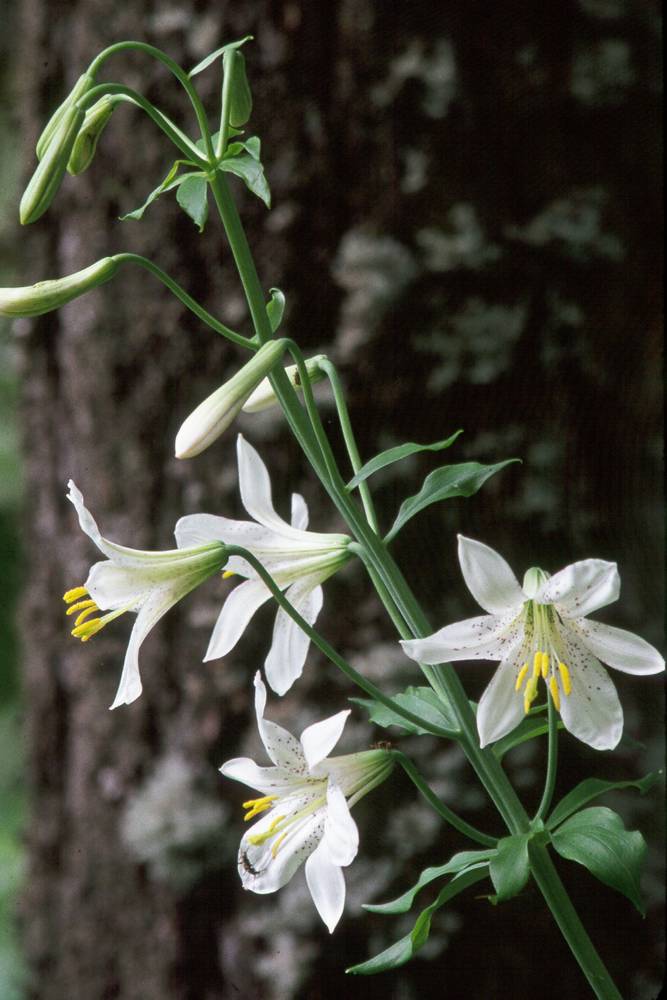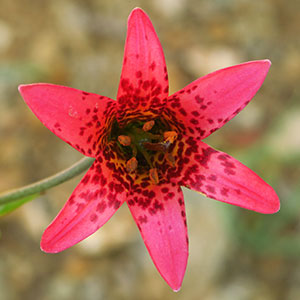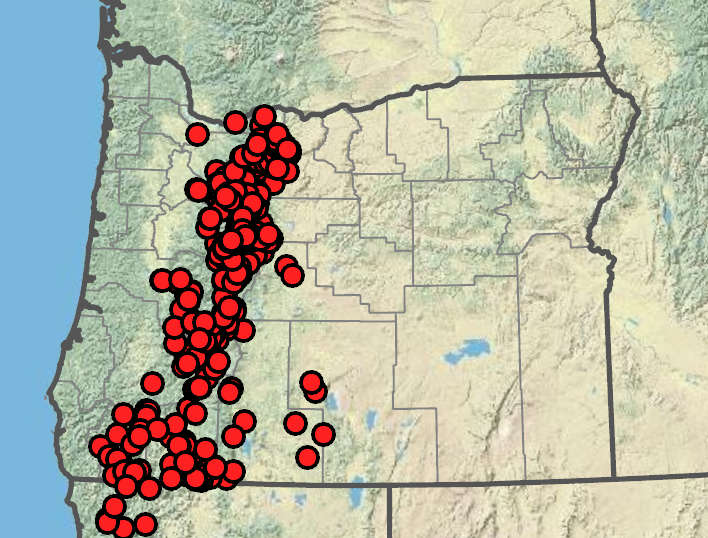Lilium washingtonianum
Lilium bolanderi
Cascade lily
Bolander's lily
in 2–6 whorls, usually ascending and often cupping stem, generally obovate or oblanceolate, 1.8–7 cm, generally distinctly glaucous;
margin generally wavy.
flowers 1–9, nodding to horizontal.
narrowly bell-shaped, not fragrant;
perianth segments 3–4.7 cm, red or magenta (rarely salmon or pale yellow); inner basal 30–50% portion usually yellowish;
distal 20–40% portion somewhat recurved;
stamens less than or equal to perianth;
filaments parallel or nearly so;
anthers 3–8 mm; reddish or magenta;
pollen red-brown, orange, or yellow;
pistil 2–3.5 cm.
2–4 cm.
=24.
Lilium washingtonianum
Lilium bolanderi
[Species with one variety or subspecies in Oregon.]
Serpentine soil in chaparral, conifer forests. Flowering Jun– Aug. 400–1400m. Sisk. CA. Native.
Lilium bolanderi can be fairly common in its preferred scrubby serpentine savanna habitat. Hybrids with L. pardalinum and L. washingtonianum ssp. purpurascens are possible. The range of corolla color variation from decidedly yellowish through red to maroon is extreme for the genus in North America—only L. canadense is similarly variable—but most are pale red to magenta. In Oregon, Bolander’s lily is primarily pollinated by rufous hummingbirds.
Mark Skinner





